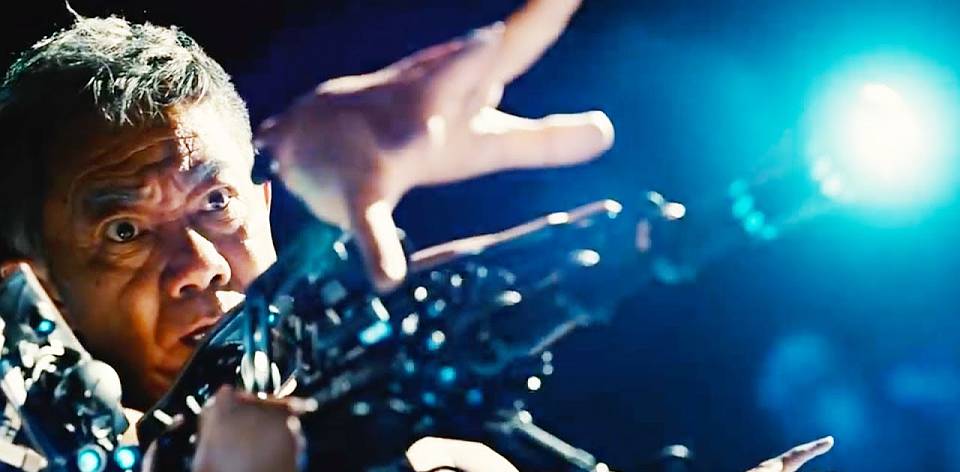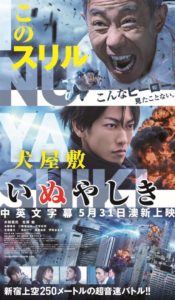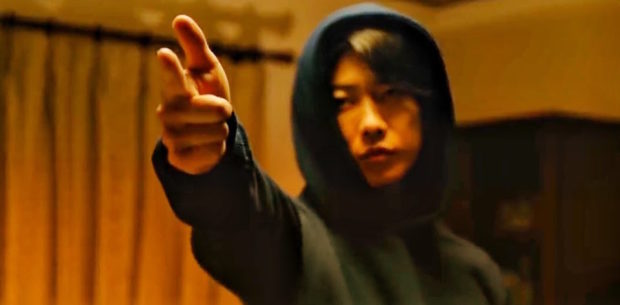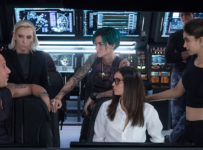Body horror has long tradition in cinema, be it The Blob or this year’s Upgrade. The island nation of Japan, however, manages to continually demonstrate their ability to make our skin crawl through the union of humans, machines, and a category we can happily call ‘other.’ Tetsuo: The Iron Man (1989) and its sequels are perhaps the most acclaimed of these, but there’s a veritable potpourri of twisted limbs and tangled minds in the likes of Tokyo Gore Police (2008) or Meatball Machine Kodoku (2017).
The live action adaptation of INUYASHIKI (いぬやしき), based on the manga series by Hiroya Oku, marries this tradition with more traditional heroics. Elderly salaryman Ichiro Inuyashiki (Noritake Kinashi) is insulted at both work and home. It gets worse when he finds out he has cancer. His life changes when he is struck by a mysterious space object, gaining cybernetic abilities. He chooses to use his power for good, but he isn’t the only one who has changed. High school student Hiro Shishigami (Takeru Satoh) was in the same accident, and his intentions are less altruistic.
Director Shinsuke Sato is no stranger to live action adaptation of manga, having previously delivered the excellent Gantz and its sequel, the light novel adaptation Library Wars, Death Note: Light Up The New World, and the forthcoming Bleach live action film. From the opening shots, INUYASHIKI is a visually faithful piece that will put readers of the manga and subsequent anime on fairly familiar territory.
Kinashi’s characterisation of the downtrodden Inuyashiki is spot-on, as if he’d stepped out of a salaryman role in an Ozu film and enacted a weird datsusara as a would-be superhero. His downbeat persona is constantly derided by his family, especially by his daughter Mari (Ayaka Miyoshi), who dials teen angst up to 11. Satoh is somewhat more muted, a psycho high school type. Sidekick Kanata Hongo seems to only exist on screen to have rubber-banded facial expressions next to the deadpan Satoh.
From the first time Kinashi’s arm splits open, or his face dangles (still speaking) from a cavity showing his spinning innards, it’s clear that Sato has paid close attention to Oku’s artwork. Unlike some other manga adaptations, this fidelity doesn’t hold the film back from having a bit of fun. In fact, the much lighter than expected tone, as Inuyashiki rockets over the city with his dog, has shades of Joe Johnston in its DNA. Except that The Rocketeer never had as many serial murder sprees as this.
As the first in an intended trilogy of films, Hiroshi Hashimoto’s script takes the time to flesh out some of the characters. Hiro in particular gets a complex relationship with his ailing and impoverished mother, for example. While there’s more than one convenient plot turn, and it still all comes down to a bare-chested fist fight, the straight hero origin story ultimately leaves us wanting even more. So it’s a good thing that the post-credits sequences teases just that.
[stextbox id=”grey” bgcolor=”F2F2F2″ mleft=”5″ mright=”5″ image=”null”]![]() 2018 | Japan | DIRECTOR: Shinsuke Sato | WRITERS: Hiroshi Hashimoto | CAST: Noritake Kinashi, Takeru Satoh, Ayaka Miyoshi, Kanata Hongo | DISTRIBUTOR: Tangren Cultural Film Group (AUS) | RUNNING TIME: 127 minutes | RELEASE DATE: 31 May 2018 (China/AUS)[/stextbox]
2018 | Japan | DIRECTOR: Shinsuke Sato | WRITERS: Hiroshi Hashimoto | CAST: Noritake Kinashi, Takeru Satoh, Ayaka Miyoshi, Kanata Hongo | DISTRIBUTOR: Tangren Cultural Film Group (AUS) | RUNNING TIME: 127 minutes | RELEASE DATE: 31 May 2018 (China/AUS)[/stextbox]






